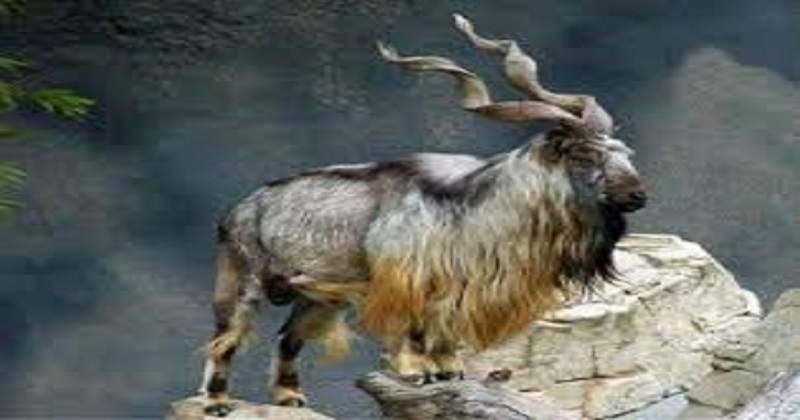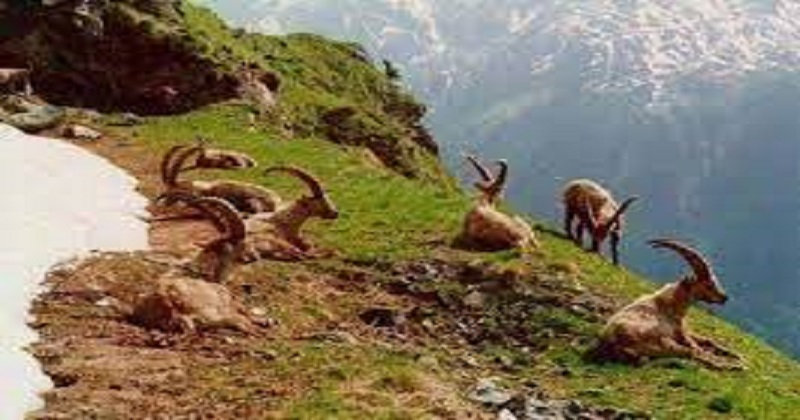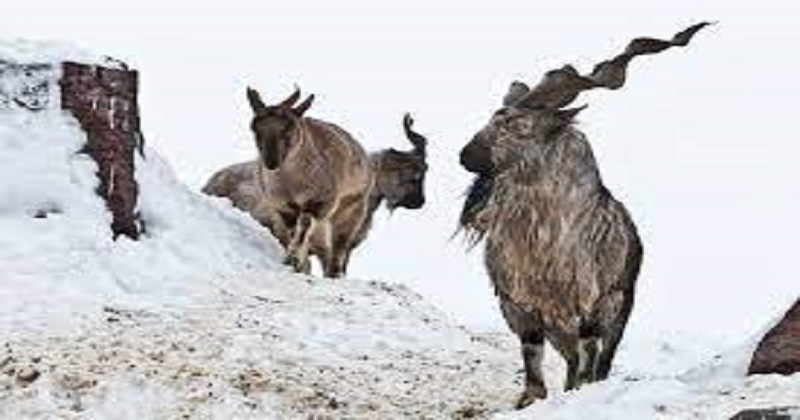
The Kazinag National Park is nestled among forests of conifers and deodar trees along the Line of Control (LoC) of north Kashmir’s Boniyar sector, which is home to the Markhors (screw-horned goat). Due to its status as a national animal of Pakistan, Markhors do not have to cross any borders to reach this part of the LoC or to cross over to the other side. As a result of its geographical distribution and the landscape, the animal can also be found in the Pir Panchal range and Kazinag National Park. ‘They have no borders. They come here and go there for breeding,’ says Dr. Reyaz Ahmad, Coordinator Wildlife Trust of India for Kashmir.
According to Dr. Reyaz, Markhors’ movement may have decreased due to the change in the situation along the LoC. Due to the fences and border vigilance, Markhors may have been limited in their movements. ‘In November and early January, the breeding season for the Markhors begins, while offspring begin to produce in May. That is also the best time to see the Markhors who descend from the higher altitudes at that time,’ he says.

Number has increased.
Reyaz said that since the poaching of the animal has been curbed, the number of Markhors in the park has also increased. According to a survey conducted two years ago, the number was 200, while eight years ago it was 150. Research on the Markhors in the valley has revealed huge differences, according to Reyaz.
For stopping the poaching of the animal, he credits the wildlife department for its frequent checks. ‘Back in 2008, when I began researching the topic, I discovered that people used to hunt them during snow because they believed no one would come to the area since it lacked roads. I have myself seen the blood on the snow,’ he said. According to a Wildlife Department official posted in the area, checks have been stepped up in the forest. A case was filed against a man who allegedly poached a Markhor in 2009 in Lachipora forests. He said such things didn’t happen anymore. According to Regional Wildlife Warden Kashmir Rashid Naqash, this is one of the richest parks in the valley. The area is visited by nature lovers, travellers, trekkers, school children and NGOs, he said, adding that he always facilitates their needs.

The Markhor Project
In his research, Dr. Reyaz stated he was only concerned about saving the animal. The Wildlife Department should employ more people who can go to these forest areas on a routine basis for intensified checks in order to prevent the Markhors from becoming extinct.
Read more: Tech abused by Indian government to spy on Pakistan, China: Report
Markhors Peace Pact
According to Reyaz, they were in the process of forming a peace pact between the two nations in order to maintain peace between them. In order to save the animal from being injured or killed by cross-border shelling, we plan to sign a peace pact with Pakistan.
National Park of Kazinag
It is located about 70 kilometers from Srinagar. With the support of the Wildlife Trust of India, three wildlife sanctuaries- Limber, Lachipora, and Naganari- were merged into the park in 2007. As it covers more than 160 square kilometers, this park has the potential to become one of the largest national parks in the country. Fayaz Ahmad Dar, a local guide, told Indiatimes that Markhors can be seen in Kandi Nallah, Dragan, Kothnal and Hokhian areas along Baba Gayil’s upper reaches.

Post Your Comments